De acordo com o Centro de Controle e Prevenção de Doenças, 1 em cada 8 crianças nascidas nos Estados Unidos a cada ano - que é cerca de 500.000 nascimentos - é um bebê prematuro. Estes nascimentos prematuros, definidos como ocorrendo antes de 37 semanas de gravidez, são responsáveis por mais de um terço de todas as mortes infantis em os EUA; custam ao sistema de saúde americano dezenas de bilhões de dólares por ano; e são "uma das principais causas de deficiência neurológicos a longo prazo nas crianças". Enquanto isso, a batalha para salvar bebês prematuros, segue a diante - com novas teorias sobre cuidados e novas tecnologias exercidas sobre esta dolorosa e, para muitos pais, assustadora complicação médica.
Setenta e cinco anos atrás, a revista Life acompanhou os passos dados em uma unidade, o Boston Lying-In Hospital (fundada em 1832), para cuidar de bebês prematuros. Sim, os aparelhos vistos nestas fotos são, em grande parte, muitos diferentes do que se vê hoje em dia em qualquer hospital em praticamente qualquer nação industrializada na Terra. Mas os cuidados manuais, a dedicação dos enfermeiros e médicos e a escala do esforço para salvar a vida desses pequenos bebês será familiar a qualquer um que tenha passado algum tempo em enfermarias da "prematuridade".
Acompanhe a série de fotografias:
[caption id="attachment_14249" align="aligncenter" width="387"]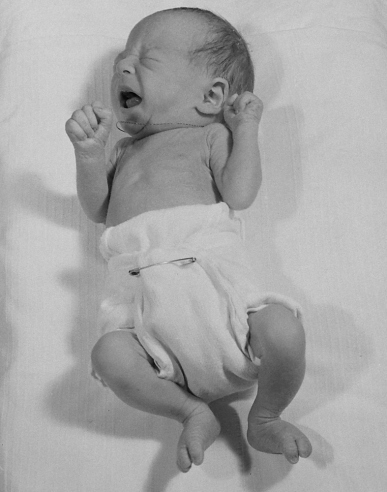 Hansel Mieth - The LIFE Picture Collection/Getty Images/Caption from LIFE. "Incubator Rooms' save premature babies' lives."[/caption]
Hansel Mieth - The LIFE Picture Collection/Getty Images/Caption from LIFE. "Incubator Rooms' save premature babies' lives."[/caption]
[caption id="attachment_14250" align="aligncenter" width="369"]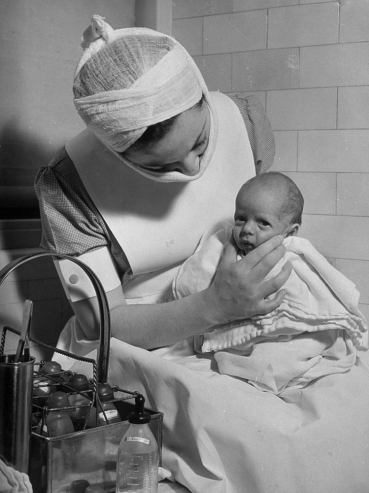 Hansel Mieth - The LIFE Picture Collection/Getty Images/Caption from LIFE. "Seven-months baby gets back massage to belch."[/caption]
Hansel Mieth - The LIFE Picture Collection/Getty Images/Caption from LIFE. "Seven-months baby gets back massage to belch."[/caption]
[caption id="attachment_14251" align="aligncenter" width="649"]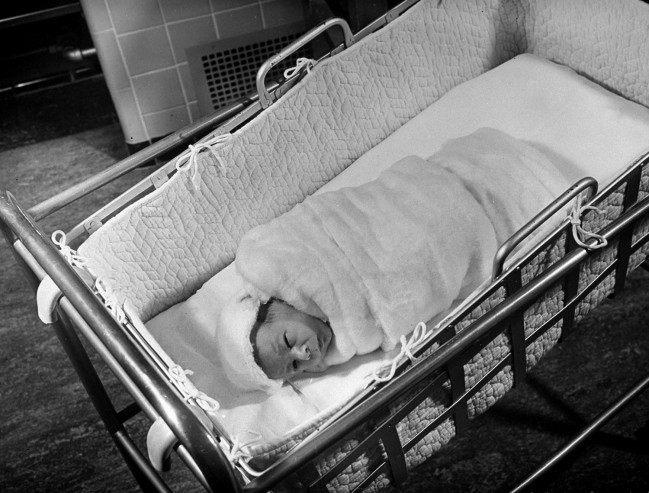 Hansel Mieth - The LIFE Picture Collection/Getty Images/Caption from LIFE. "Ten-minute-old baby swathed in cotton batting."[/caption]
Hansel Mieth - The LIFE Picture Collection/Getty Images/Caption from LIFE. "Ten-minute-old baby swathed in cotton batting."[/caption]
[caption id="attachment_14252" align="aligncenter" width="377"]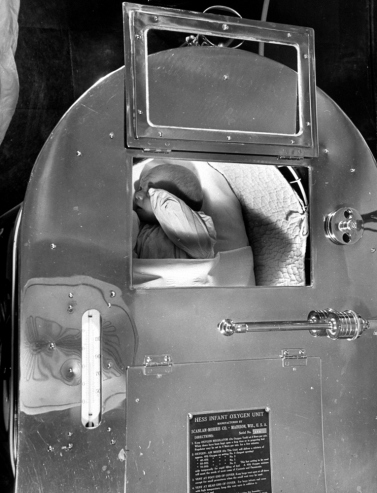 Hansel Mieth - The LIFE Picture Collection/Getty Images/Caption from LIFE. "The Hess bed is the premature baby's equivalent of an oxygen tent. Weak babies are placed in this container, given pure air and oxygen which facilitates breathing."[/caption]
Hansel Mieth - The LIFE Picture Collection/Getty Images/Caption from LIFE. "The Hess bed is the premature baby's equivalent of an oxygen tent. Weak babies are placed in this container, given pure air and oxygen which facilitates breathing."[/caption]
[caption id="attachment_14254" align="aligncenter" width="392"]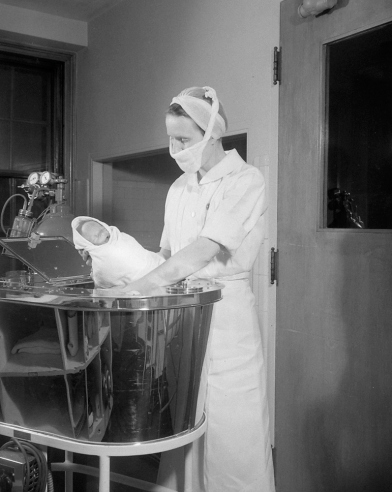 Hansel Mieth - The LIFE Picture Collection/Getty Images/Not published in LIFE. Photo from story on premature babies, 1939.[/caption]
Hansel Mieth - The LIFE Picture Collection/Getty Images/Not published in LIFE. Photo from story on premature babies, 1939.[/caption]
[caption id="attachment_14256" align="aligncenter" width="365"]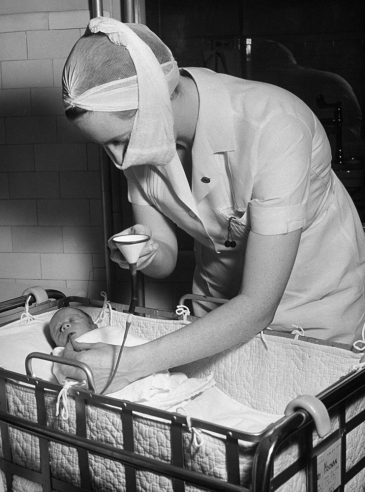 Hansel Mieth - The LIFE Picture Collection/Getty Images/Caption from LIFE. "Three-pound babies are fed by placing rubber tube down their throats, pouring milk through a funnel into the tube. Such feeding conserves the baby's strength."[/caption]
Hansel Mieth - The LIFE Picture Collection/Getty Images/Caption from LIFE. "Three-pound babies are fed by placing rubber tube down their throats, pouring milk through a funnel into the tube. Such feeding conserves the baby's strength."[/caption]
[caption id="attachment_14257" align="aligncenter" width="381"]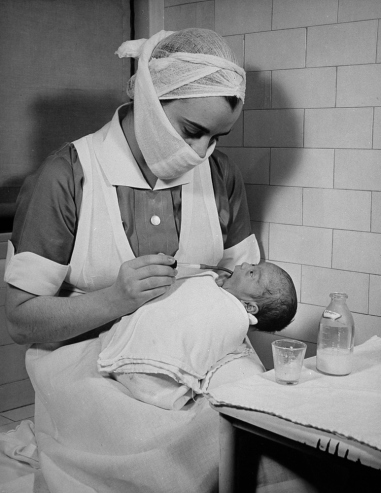 Hansel Mieth - The LIFE Picture Collection/Getty Images/Caption from LIFE. "A medicine dropper is used to feed babies who are too weak to suck a nipple."[/caption]
Hansel Mieth - The LIFE Picture Collection/Getty Images/Caption from LIFE. "A medicine dropper is used to feed babies who are too weak to suck a nipple."[/caption]
[caption id="attachment_14258" align="aligncenter" width="375"]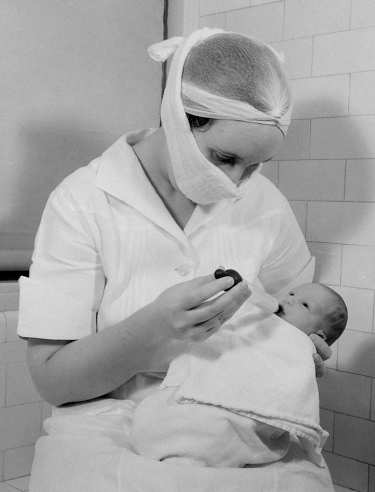 Hansel Mieth - The LIFE Picture Collection/Getty Images/Caption from LIFE. "Combination bottle-dropper with both a bulb and a nipple teaches baby to nurse."[/caption]
Hansel Mieth - The LIFE Picture Collection/Getty Images/Caption from LIFE. "Combination bottle-dropper with both a bulb and a nipple teaches baby to nurse."[/caption]
[caption id="attachment_14259" align="aligncenter" width="384"]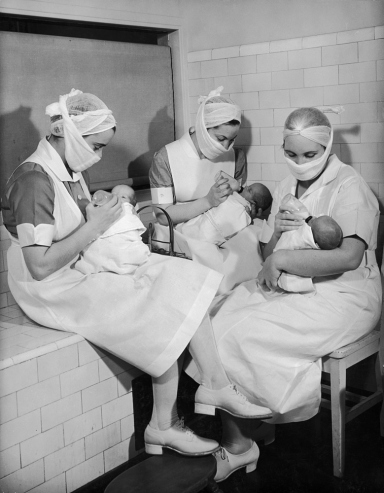 Hansel Mieth - The LIFE Picture Collection/Getty Images/Caption from LIFE. "Fully developed, the premature babies drink from regular bottles containing either mother's milk or formula milk. Nurses always wear masks over mouth and nose."[/caption]
Hansel Mieth - The LIFE Picture Collection/Getty Images/Caption from LIFE. "Fully developed, the premature babies drink from regular bottles containing either mother's milk or formula milk. Nurses always wear masks over mouth and nose."[/caption]
[caption id="attachment_14260" align="aligncenter" width="382"] Hansel Mieth - The LIFE Picture Collection/Getty Images/Not published in LIFE. Photo from story on premature babies, 1939.[/caption]
Hansel Mieth - The LIFE Picture Collection/Getty Images/Not published in LIFE. Photo from story on premature babies, 1939.[/caption]
[caption id="attachment_14261" align="aligncenter" width="390"]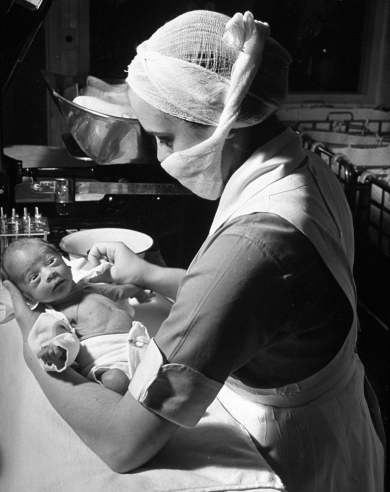 Hansel Mieth - The LIFE Picture Collection/Getty Images/Not published in LIFE. Nurse with premature baby, Boston, 1939.[/caption]
Hansel Mieth - The LIFE Picture Collection/Getty Images/Not published in LIFE. Nurse with premature baby, Boston, 1939.[/caption]
[caption id="attachment_14262" align="aligncenter" width="383"]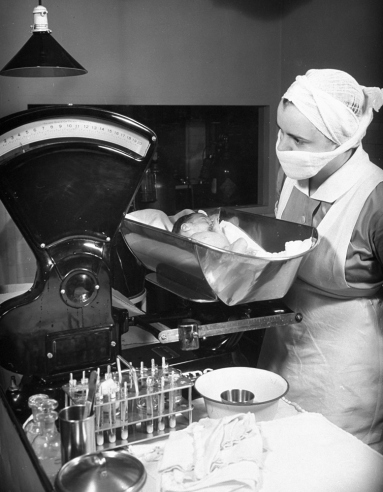 Hansel Mieth - The LIFE Picture Collection/Getty Images/Not published in LIFE. Nurse with premature baby, Boston, 1939.[/caption]
Hansel Mieth - The LIFE Picture Collection/Getty Images/Not published in LIFE. Nurse with premature baby, Boston, 1939.[/caption]
[caption id="attachment_14263" align="aligncenter" width="668"]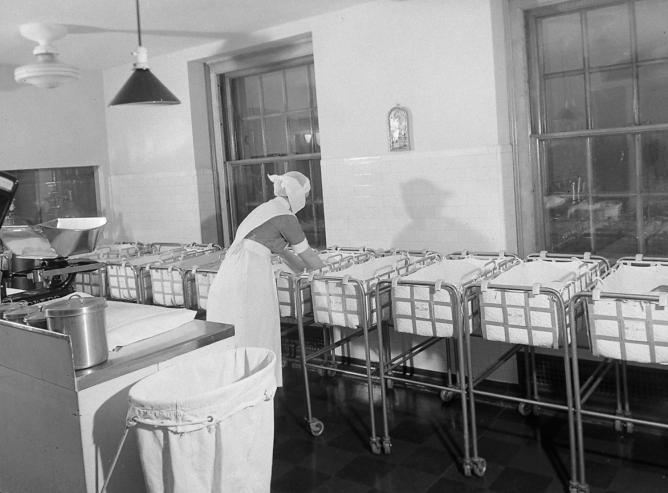 Hansel Mieth - The LIFE Picture Collection/Getty Images/Not published in LIFE. Photo from story on premature babies, 1939.[/caption]
Hansel Mieth - The LIFE Picture Collection/Getty Images/Not published in LIFE. Photo from story on premature babies, 1939.[/caption]
[caption id="attachment_14264" align="aligncenter" width="493"]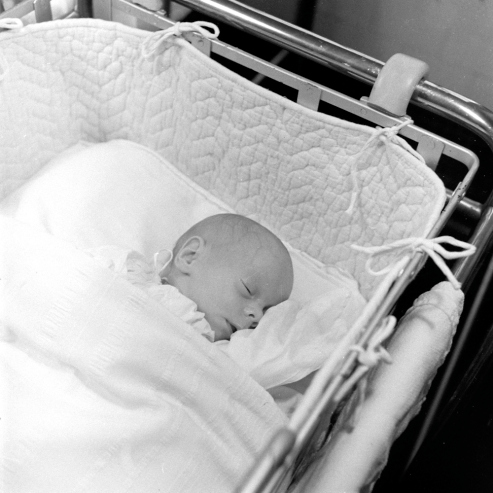 Hansel Mieth - The LIFE Picture Collection/Getty Images/Not published in LIFE. Photo from story on premature babies, 1939.[/caption]
Hansel Mieth - The LIFE Picture Collection/Getty Images/Not published in LIFE. Photo from story on premature babies, 1939.[/caption]
[caption id="attachment_14265" align="aligncenter" width="404"]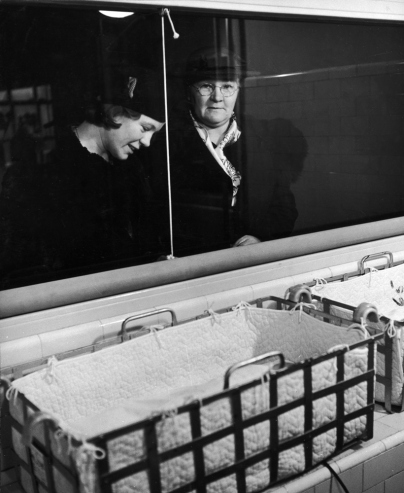 Hansel Mieth - The LIFE Picture Collection/Getty Images/Caption from LIFE. "Mothers of premature babies are never allowed inside the nursery, can spend one hour a day fondly gazing at their infants in their cots through a glass partition."[/caption]
Hansel Mieth - The LIFE Picture Collection/Getty Images/Caption from LIFE. "Mothers of premature babies are never allowed inside the nursery, can spend one hour a day fondly gazing at their infants in their cots through a glass partition."[/caption]
[caption id="attachment_14266" align="aligncenter" width="493"]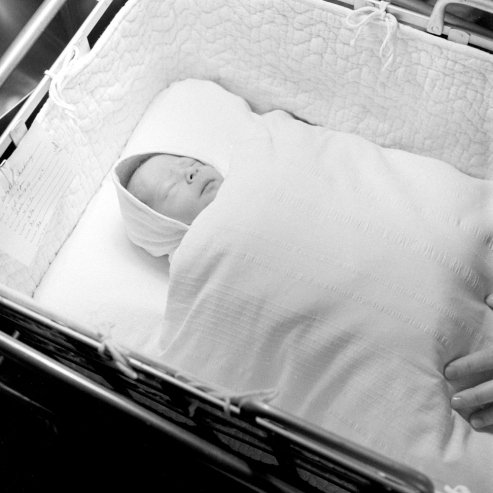 Hansel Mieth - The LIFE Picture Collection/Getty Images/Not published in LIFE. Photo from story on premature babies, 1939.[/caption]
Hansel Mieth - The LIFE Picture Collection/Getty Images/Not published in LIFE. Photo from story on premature babies, 1939.[/caption]
Fonte: Life

 área dos profissionais
área dos profissionais

